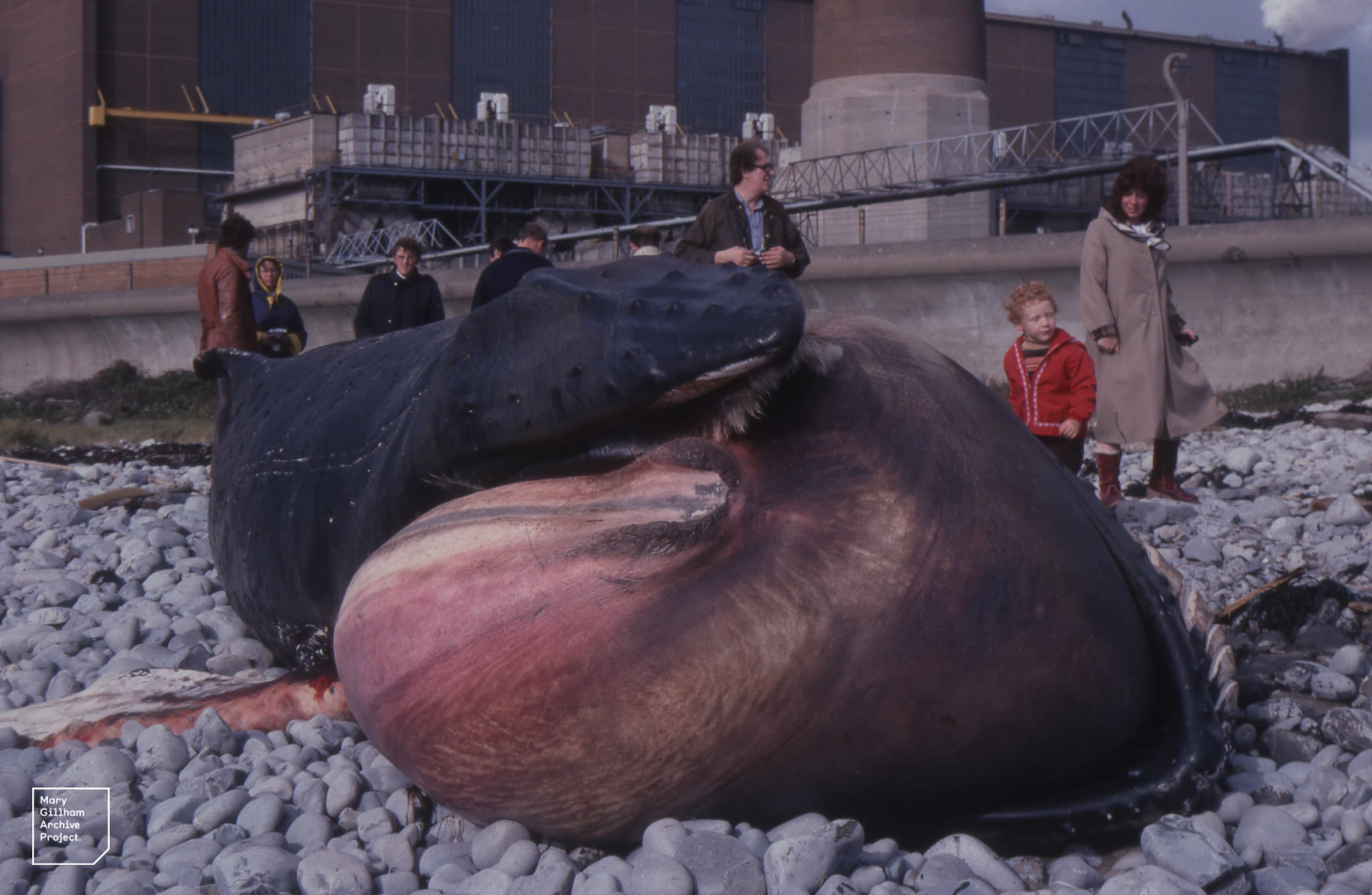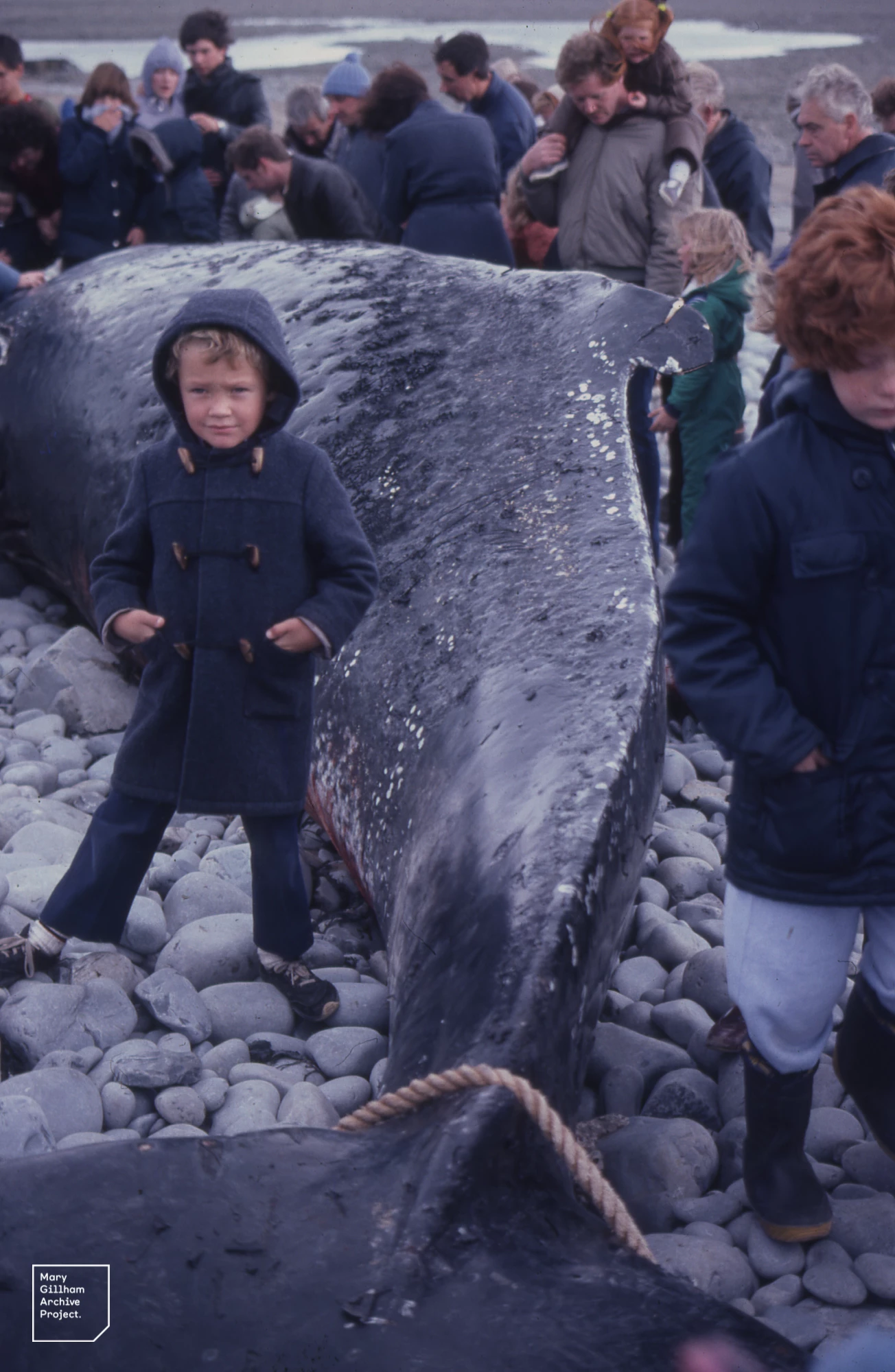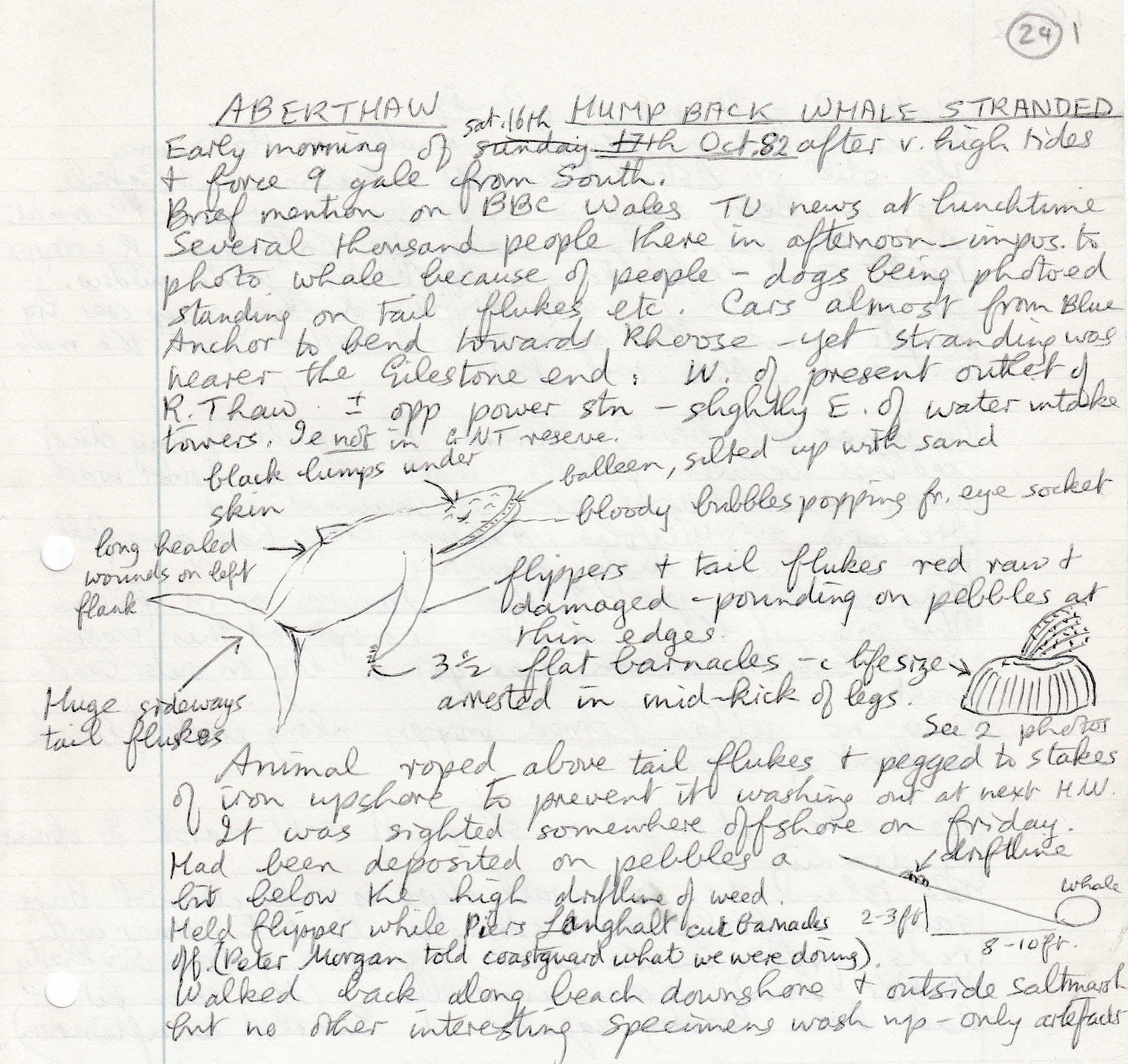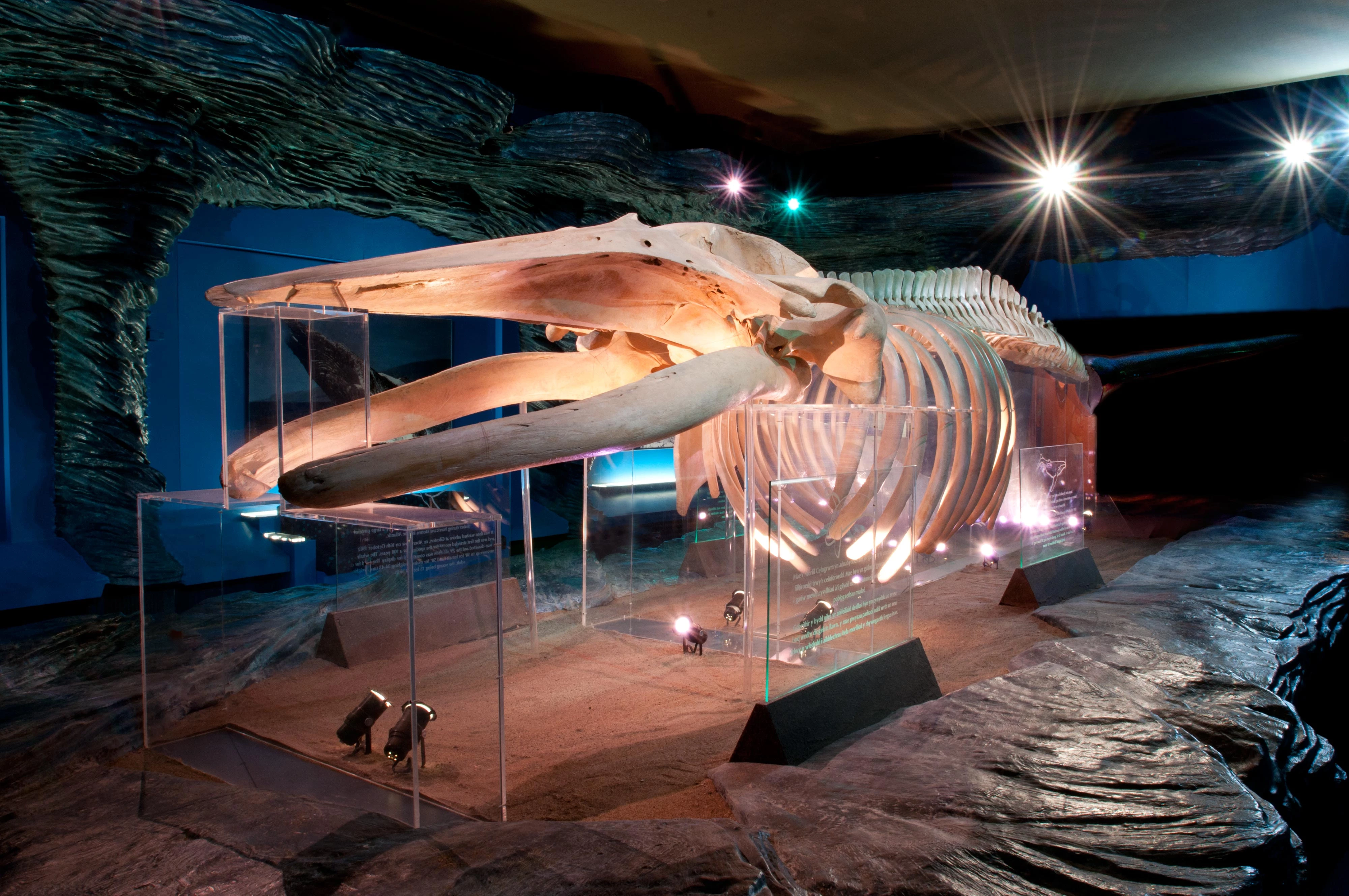Aberthaw’s Humpback Whale
, 17 Tachwedd 2016
Here at the Mary Gillham Archive Project hub we’ve recently begun ‘timehopping’ on social media.
This involves using Mary’s detailed writings to find out what she was doing on today’s date, so many years ago, and then posting it on Twitter and Facebook (i.e. “on this date, in this year, Mary was doing this…”). It’s an interesting way to learn about Mary’s life history and see the many activities that she got up to in her day-to-day life.
A recent and particularly intriguing timehop posted on 16th October described how on that day in 1982, Mary witnessed the enormous humpback whale lying washed up on Gilestone beach at Aberthaw, near the Power Station.
This sparked the interest of many and after a twitter conversation with National Museum Cardiff it turns out that the bones of the whale are now on display at the museum, right here in Cardiff! This means that you can still visit this gigantic sea mammal today and see a part of Welsh history with your own eyes, just like Mary did.
Crowds on Aberthaw Beach
For those fortunate enough to be there in 1982 Aberthaw, the experience was an unforgettable one.
In her archive, Mary explains that it was almost “impossible to photograph the whale” due to the thousands of people congregating to get a glimpse.
The coastguard had tied the tail of the whale to a large iron post in the ground with ropes (to prevent the animal from washing back out to sea).
Mary describes how she got the chance to hold one of the whale’s gigantic flippers while Piers Langhalt, formerly of National Museum Cardiff, cut the large barnacles from the animal. These same barnacles can be found preserved at the museum, alongside the whale!
One volunteer on the Mary Gillham Archive Project, Julia Banks, recalls the “overpowering, rotting smell” of the beached whale that she witnessed as a young child. Julia visited the scene with her parents and remembers joining the masses of locals all gathering for the unusual sight, as well as seeing a group of people measuring the whale in order to figure out its age.
Julia also remembers visiting National Museum Cardiff when the skeleton was put up on display, and “feeling proud that [their] whale was in the museum”.
For more of the story and info on how the whale was managed by National Museum Cardiff, why not take a trip to the museum to see for yourself how it stands today?
The Mary Gillham Archive Project is a Heritage Lottery funded project at South East Wales Biodiversity Records Centre.
For more info about the project visit our website: https://marygillhamarchiveproject.com/the-project/





sylw - (3)
Hi Mark,
Thank you for getting in touch with us, I have passed your question on to my colleagues, we will try and get an answer to you as soon as possible.
Kind regards,
Nia
(Digital team)
Thanks
Mark